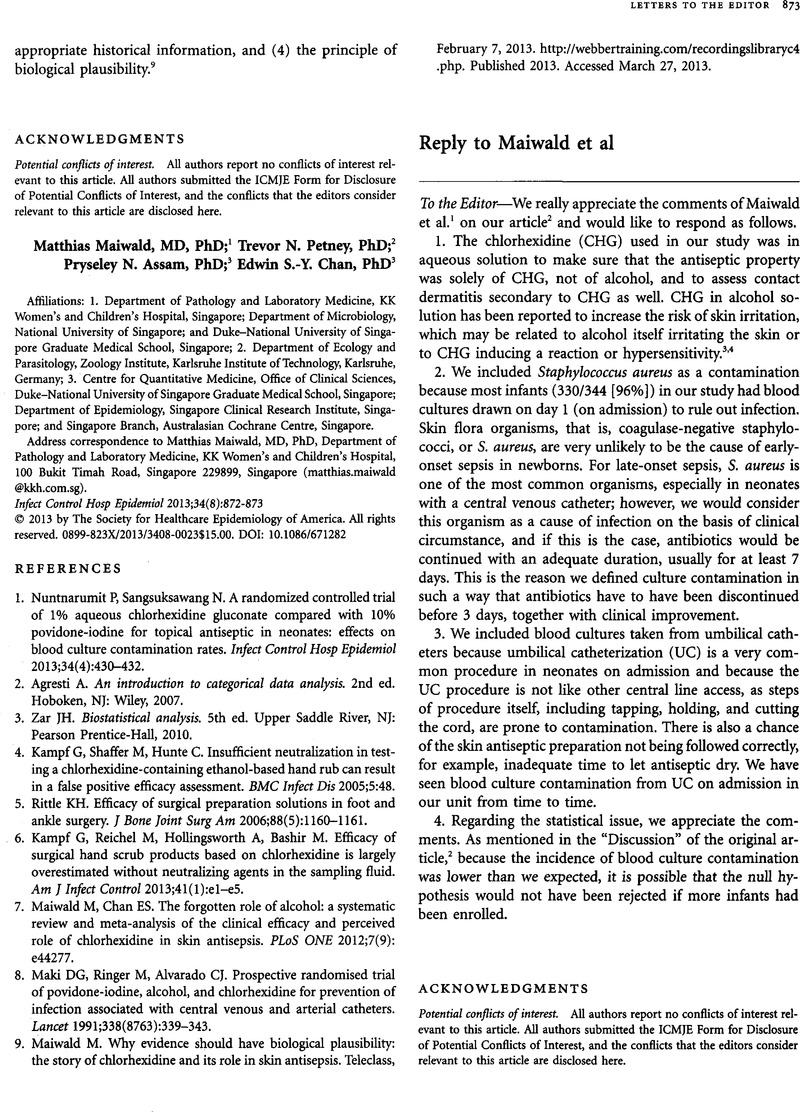No CrossRef data available.
Article contents
Reply to Maiwald et al
Published online by Cambridge University Press: 02 January 2015
Abstract
An abstract is not available for this content so a preview has been provided. As you have access to this content, a full PDF is available via the ‘Save PDF’ action button.

- Type
- Letters to the Editor
- Information
- Copyright
- Copyright © The Society for Healthcare Epidemiology of America 2013
References
1.Maiwald, M, Petney, TN, Assam, PN, Chan, ES-Y. Use of statistics as another factor leading to an overestimation of chlorhexidine's role in skin antisepsis. Infect Control Hosp Epidemiol 2013;34(8): 872–873.Google Scholar
2.Nuntnarumit, P, Sangsuksawang, N. A randomized controlled trial of 1% aqueous Chlorhexidine gluconate compared with 10% povidone-iodine for topical antiseptic in neonates: effects on blood culture contamination rates. Infect Control Hosp Epidemiol 2013;34(4):430–432.Google Scholar
3.Chapman, AK, Aucott, SW, Milstone, AM. Safety of Chlorhexidine gluconate used for skin antisepsis in the preterm infant. J Perinatol 2012;32(1):4–9.Google Scholar
4.Reynolds, PR, Banerjee, S, Meek, JH. Alcohol burns in extremely low birthweight infants: still occurring. Arch Dis Child Fetal Neonatal Ed 2005;90(1):F10. doi:10.1136/adc.2004.054338.CrossRefGoogle ScholarPubMed




